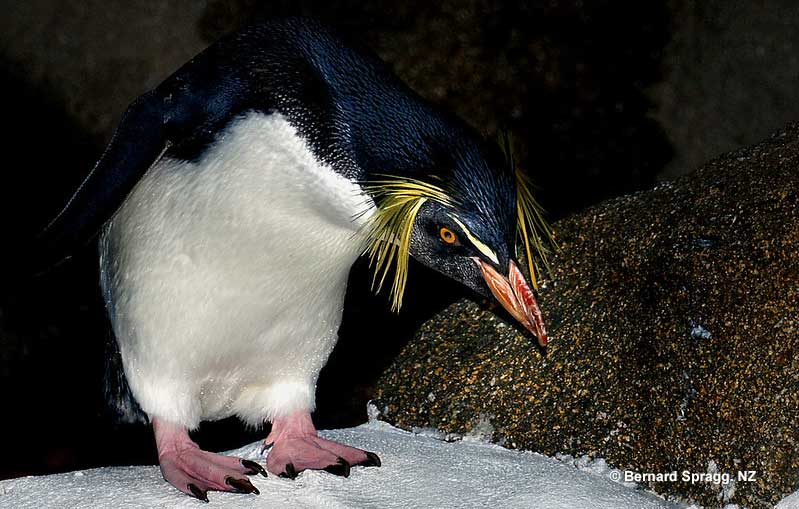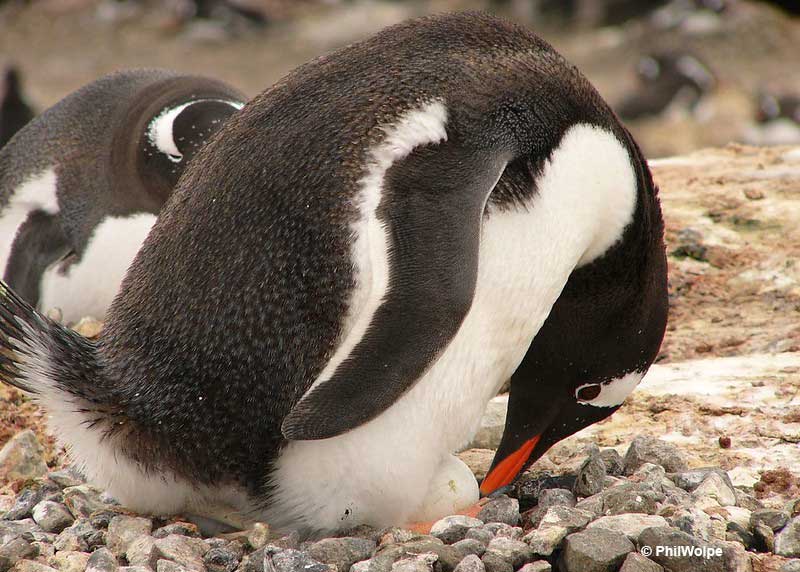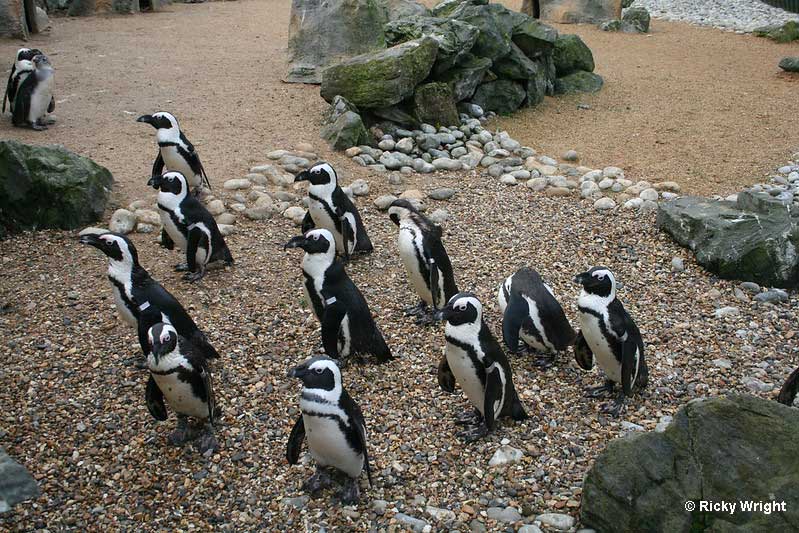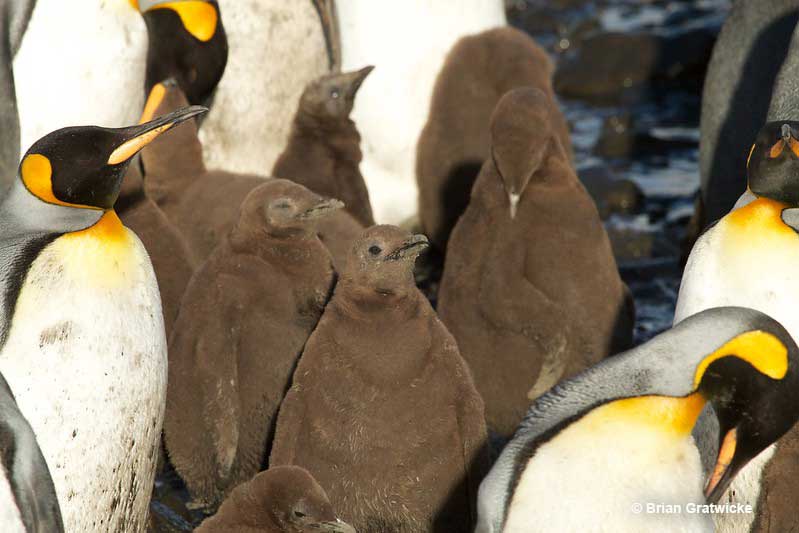
Penguins, beloved for their charming waddle and tuxedo-like appearance, have developed some fascinating adaptations.
One of them is their plumage, which helps keep them warm and waterproof. It might look like fur at first glance! Let’s see how and why’s that.
Key takeaways:
- Even though it doesn’t seem so most of the time, penguins do have feathers.
- Similarly to geese and ducks, penguins groom themselves to distribute the natural oils over their plumage. This helps to keep their feathers waterproof.
- As nimble swimmers, it is vital to keep themselves dry and warm.
On this page
Feathers or Something Else?
At first glance, you might question whether penguins truly are birds, given their unique appearance and flightless nature.
Contrary to initial impressions, penguins do have feathers, even though these feathers resemble fur.
They are short, broad, and densely packed, forming a waterproof layer. Their flattened, overlapping structure reduces drag, allowing penguins to move effortlessly through the water with agility and precision. They have approximately 100 feathers per square inch, which is more than in most birds.

The feathers are not only highly efficient in keeping water away from the skin but also have tufts of down on the shafts. This is crucial for insulation in their cold aquatic habitats. Penguins also molt yearly, which means they shed and replace their old feathers. During this time, they are land-bound as their new feathers aren’t immediately waterproof.
Their generally black-and-white plumage also serves a practical purpose – camouflage. The dark upperside helps penguins blend in with the darkness of the ocean when viewed from above. Similarly, their light underside helps them blend in with the sky when viewed from below. This reduces the likelihood of being spotted by predators.
Are their feathers waterproof?
Penguin feathers are waterproof. They owe this to two adaptations – their unique feathers and plumage and the uropygial gland.
Penguins have specialized feathers that are short, stiff, wide, and densely packed, creating flattened and overlapping layers. This is their first layer of defense that prevents them from becoming waterlogged. The second layer of defense is the uropygial gland, located at the base of the tail.
Similarly to other waterfowl, like geese and swans, penguins diligently preen and oil their feather every day to create and maintain this waterproofing layer.
Penguins must remain waterproof for several reasons related to their survival and well-being. Firstly, waterproof feathers enhance buoyancy, enabling penguins to swim with efficiency and agility. This is vital for catching prey, escaping predators, and navigating their aquatic environments.
Additionally, maintaining waterproof plumage is essential for thermoregulation, as wet feathers lose their insulating properties, making penguins more susceptible to the cold temperatures of their habitats. Dry and waterproof feathers contribute to the bird’s ability to regulate body temperature and survive in frigid conditions.
Furthermore, waterproofing is paramount for penguins’ flightless lifestyle. While they may not soar through the air, their streamlined swimming and diving heavily rely on effective waterproofing to minimize water resistance.
Do Penguins Have Different Plumage Based On Where They Live?
You can generally recognize penguins by the shape of their body and their iconic black-and-white “tuxedo.” Still, there are some differences between species.
Emperor and King Penguins have the classic tuxedo-like appearance with a black head, back, and wings, while their chest and belly are white. They both have orange or yellowish markings on their cheeks, bill, and top of the chest. These two species belong to the same genus which is why they look that similar.

What species would these penguins categorize under?
The next genus is Pygoscelis with three species. The general coloration is the same – they have dark uppersides and white undersides. Adélie Penguins have a black head, a white eye ring, and dark eyes. Chinstrap Penguins look like they’re wearing helmets. They have a generally white face and chin but a black cap and a thin black band connecting to the sides of the cap. The Gentoo Penguin can be recognized by the wide white eyebrow stripe.
Related: Bird Families & Classifications
The two smallest penguin species, Little Blues, or Fairy Penguins, have slate-blue plumage, with a white belly and a subtle blue-and-white face. The Yellow-eyed Penguin also has a slaty-blue back but can be recognized by a stripe of yellow surrounding its eyes and encircling the back of its head.
The genus Spheniscus encompasses four species. All Spheniscus penguins are relatively small compared to other penguin species, with adults typically ranging from about 16 to 18 inches in height. They share a general color pattern with black backs and wings, white undersides, and distinct facial markings. These markings often include a band or stripe that runs across their face and eyes.
The defining feature of Eudyptes penguins is the presence of crests or plumes on their heads. These crests vary in size, shape, and color among species but are a shared characteristic and look like huge puffy eyebrows.
Why Do Baby Penguins Look So Fluffy?
The fluffy appearance of young penguins compared to adults is due to their down feathers. Down feathers are soft, fluffy, and provide insulation, helping to keep the chicks warm in the harsh conditions of their environment. This downy plumage is typically shed as the penguins mature and is gradually replaced by the more structured and sleek adult feathers.

The fluffy down feathers create a layer of insulation, crucial for maintaining body heat in the cold and often icy habitats where penguins breed. The color of the down also acts as a form of camouflage, blending in with the surrounding rocks or snow, which helps protect chicks from potential predators.
Frequently Asked Questions
Why do penguins have feathers instead of fur?
Penguins have feathers instead of fur because they are birds, not mammals.
Why don’t penguins’ feathers get wet?
Penguins’ feathers don’t get wet due to their specialized structure and oil coating; the feathers are short, stiff, and densely packed, while the oil creates an additional waterproof barrier, preventing water absorption.
Do penguins lose their feathers once a year?
Penguins lose their feathers once a year; a process called molting where they shed and replace old feathers. The exception is the Galápagos Penguin, who molts twice a year.

Greta Muller
Sunday 3rd of March 2024
You make learning a joy.
Patrick O'Donnell
Monday 4th of March 2024
@Greta- Happy to hear that!